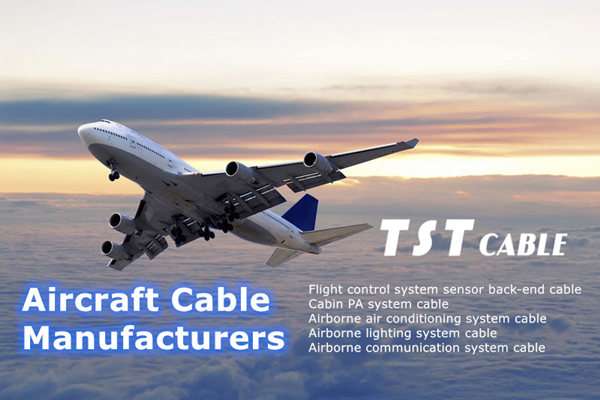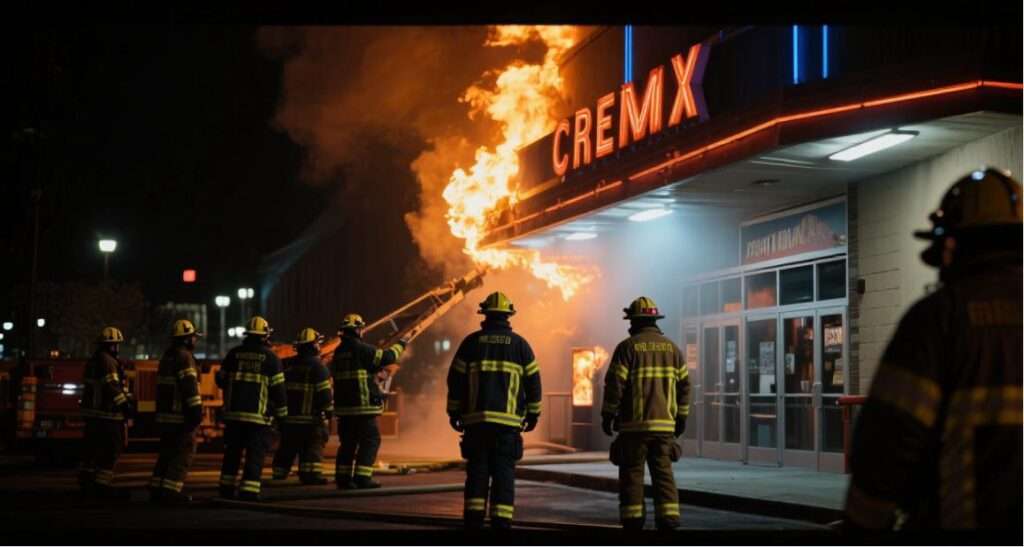Low smoke zero halogen cables (LSZH cables or LSHF cables, LSOH cables) are very suitable for environments with strict requirements for safety and environmental friendliness, such as laboratories and data centers. This type of cable can not only reduce the generation of toxic smoke in the event of a fire, but also avoid the release of corrosive halogen gases, thereby protecting the health of personnel and the safety of equipment, and meeting strict environmental standards. TST CABLES will take you to understand some key points of the application of low smoke zero halogen cables in laboratories and data centers.

Actual application scenarios of low smoke zero halogen cables in data centers
Application of low smoke zero halogen cables in laboratories:
In scientific research laboratories, due to the large number of sensitive experimental equipment and valuable instruments, choosing LSZH cables can effectively reduce the damage caused by fire to these assets and ensure the safety of researchers.
Application of low smoke zero halogen cables in data centers:
There are a large number of servers and other IT hardware inside the data center. Once a fire occurs, traditional halogen-containing cables will release a large amount of harmful gases, which seriously threatens the safety of employees and the integrity of data, causing significant commercial damage and endangering the lives of staff. Therefore, the use of LSZH cables is one of the important measures to ensure the reliable operation of data centers.
Advantages of using low-smoke halogen-free cables in laboratory data centers
Low-smoke halogen-free cables have been widely used in laboratory data centers due to their excellent safety performance, environmental protection characteristics and high standards of flame retardant requirements. TST CABLES summarizes the 13 key reasons why low-smoke halogen-free cables are used in laboratory data centers to give you a comprehensive understanding of the application of low-smoke halogen-free cables.
1. Environmental protection and non-toxicity: Low-smoke halogen-free cables use halogen-free materials as insulation and sheaths. They produce very little smoke when burned and do not contain toxic substances, which effectively reduces secondary pollution during fires and protects the safety of personnel and equipment.
2. Improved safety: Low-smoke halogen-free cables produce less smoke when burned and do not produce corrosive gases. This is especially important for confined spaces such as data centers because it can reduce casualties and equipment damage during fires. The low smoke characteristics of low-smoke halogen-free cables ensure that employees have enough light to find escape exits in an emergency, and the halogen-free characteristics ensure the safety of personnel and the protection of equipment from corrosion.
3. Superior flame retardant performance: This type of cable can effectively suppress the spread of fire and reduce the risk of fire. Its flame retardant mechanism mainly relies on the flame retardancy of the material itself and the carbonized layer formed during combustion, which can effectively isolate oxygen and prevent the further expansion of the flame. Low-smoke halogen-free cables must achieve a good flame retardant grade. The three international standards IEC60332-1, IEC60332-2 and IEC60332-3 are used to evaluate the flame retardant ability of single cables and bundled cables when they burn vertically. In particular, the IEC60332-3A standard requires that the cable does not burn within 40 minutes of vertical combustion, which provides extremely high fire safety protection for laboratories and large data centers.
4. High temperature stability: The insulation and sheath materials of low-smoke halogen-free cables have high heat resistance, can maintain stable electrical and mechanical properties at high temperatures, are not prone to aging, cracking and other problems, and extend the service life.
5. Strong weather resistance: The sheath material of the cable can resist the erosion of natural environments such as ultraviolet rays, ozone, and rain, so that the cable can maintain stable performance for a long time when installed outdoors.
6. High softness: The insulation and sheath materials of low-smoke halogen-free cables usually have good flexibility, which makes the overall softness of the cable high, easy to bend and install, and improves construction efficiency.
7. Corrosion resistance: The sheath material of the cable has excellent corrosion resistance and can resist the erosion of chemical substances such as acid, alkali, and salt, so that it can also work reliably in corrosive environments such as chemical, petroleum, and ocean.
8. Excellent electrical performance: Low-smoke halogen-free cables have excellent electrical performance. Their insulation materials have excellent insulation resistance and voltage resistance, reduce energy loss and leakage, and have good anti-interference ability to ensure the stability and accuracy of signal transmission.
9. High safety: Combining the above characteristics, low-smoke halogen-free cables are particularly outstanding in terms of safety. Their environmental protection and non-toxicity, good flame retardant performance, high temperature stability, strong weather resistance, high softness, corrosion resistance and excellent electrical performance together constitute the high safety of this type of cable.
10. Compliance with technical specifications: Data center cabling should comply with the “Technical Specifications for Data Center Network Cabling” T/CECS 485-2017, which is issued by the China Engineering Construction Standardization Association and involves technical specifications for data center network cabling. Compliance with technical specifications: When selecting low-smoke halogen-free cables, data centers need to follow the standards issued by the International Electrotechnical Commission IEC: IEC61034 (smoke density), IEC60754 (corrosiveness of combustion gases) and IEC60332-3 (flame retardant performance).
11. Data center design specifications: According to the “Data Center Design Specifications”, the data center network should include the Internet, front-end network, back-end network and operation and management network, and the cabling system design should comply with the relevant provisions of the national standard “Integrated Cabling System Engineering Design Specifications” GB 50311.
12. Anti-interference ability: Low-smoke halogen-free cables adopt a double shielding structure of copper tape shielding layer and aluminum-plastic shielding layer, which makes the cable as a whole have strong anti-interference performance and high safety factor. Cables in data centers and communication rooms need to have good anti-interference capabilities. Low-smoke halogen-free cables can meet these requirements and ensure the stability and security of data transmission.
13. Aging resistance: The materials and processes of low-smoke halogen-free cables have good resistance to high temperature, aging and electrical corrosion. They can operate stably for a long time in extreme environments and extend the service life of cables.
These characteristics make low-smoke halogen-free cables an ideal choice for data center wiring, which not only improves the efficiency of use, but also greatly enhances its safety and reliability in various environments.
Precautions for installing low-smoke halogen-free cables in data centers
Path planning: Reasonably plan the direction of the cable to avoid laying it in parallel with other strong power lines to prevent electromagnetic interference; for important occasions, redundant path design should be considered.
Terminal processing: Correctly select appropriate connector accessories and perform termination operations according to the manufacturer’s instructions to ensure good contact and waterproof and dustproof.
Fire isolation: Although LSZH cables themselves have good flame retardant properties, in the actual installation process, they should still be used in conjunction with fireproof partitions, fireproof coatings and other means to further enhance the fireproof capability of the overall system.
Data Center Low Smoke Halogen Free Cable Standards and Certification
Different countries and regions have different standards and specifications for low smoke halogen free cables. For example, in the European market, EN 50604 is an important standard for low smoke halogen free cables; while in North America, there are relevant regulations of NEC (National Electrical Code). When purchasing, you should pay attention to the compliance of the product to ensure that it meets local regulations and technical requirements.
Cost-effectiveness analysis of low smoke halogen free cables in data centers
Although the cost of low smoke halogen free cables may be slightly higher than traditional cables, in the long run, considering the additional safety and environmental advantages they provide, especially in places such as laboratories and data centers where reliability and safety requirements are extremely high, this investment is very worthwhile.
Low smoke halogen free cables are ideal for laboratories and data centers because of their unique advantages. If you are selecting cables for such a project, it is recommended that you consult TST CABLES professional cable engineers immediately to determine the most suitable products based on your specific needs and budget.
Also available in:
English




